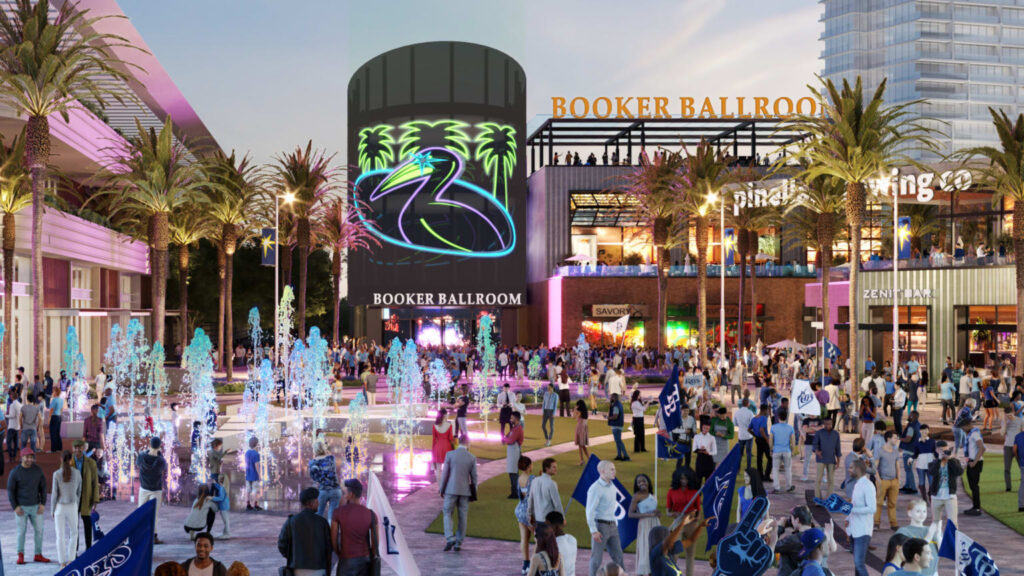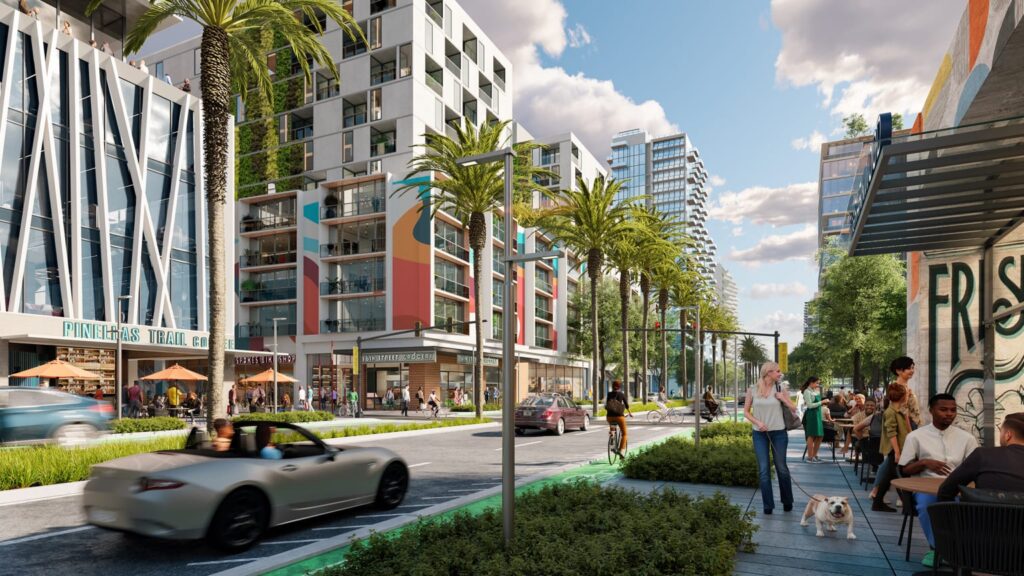Photo courtesy of Tampa Bay Rays
By Alisha Durosier
On July 18, the St. Petersburg City Council and Pinellas County Commissioners approved a funding deal that will build the Tampa Bay Rays’ new stadium and redevelop the surrounding 65 acres known as the Historic Gas Plant District.
Nearly a year has passed since the Tampa Bay Rays proclaimed that they were “Here to Stay,” following the announcement of the city’s plans to build a new ballpark in St. Petersburg.
The project is a collaboration between the City of St. Petersburg, Pinellas County, the Tampa Bay Rays and real estate developer Hines.
Included in the $6.5 billion project is the redevelopment of the Historic Gas Plant District, a predominantly Black community that lived in the area where Tropicana Field sits, but was displaced by its construction in the late 1980s.
With a 5-3 vote, the St. Petersburg City Council voted in favor of the agreement between the city, Pinellas County, the Rays and Hines.
Per the negotiated agreement, in addition to the $1.3 billion ballpark slated to begin construction next year, the partnership pledges to develop 6,000 residential units — 1,250 of which will be affordable housing — a grocery store, a daycare, a library or “incubator space,” a new Woodson African American Museum, and retail and office space.

The agreement also includes a $50 million commitment to “Intentional Equity” initiatives that fall within four categories outlined by the Rays and Hines: entrepreneurship, employment, education and history.
Minority and women-owned businesses will be allocated at least 10% of the developed property, with the Rays and Hines aiming to allocate 30% using “good faith efforts.” “Good faith” is defined as the attempt to reduce hurdles many minority groups face in the workforce. The development will also commit $17.5 million towards educational and enrichment programs, $10 million of which is slated to go towards the construction of the new Woodson African American Museum. To honor the Gas Plant District, components of the project will be named after historic mementos. The agreement also calls for due diligence regarding the Oaklawn Cemetery, the cemetery that once was established on the land that Tropicana Field’s Lot 1 occupies.
The Rays and Hines aim for 15% of the total hours worked in construction efforts and related services to be performed by disadvantaged workers and apprentices.
The city will contribute $287.5 million to the construction of the stadium and $142 million towards roads and sewage. To help with the costs, the council agreed to issue bonds. The council also agreed to sell the surrounding 65 acres of land for $105 million below the appraised value.
The Rays, also responsible for all cost overruns, will put $700 million towards the stadium.
Additionally on July 30, Pinellas County Commissioners voted 5-2 to contribute $312.5 million in tourist development taxes towards the stadium’s construction. Tourist development taxes are collected mainly through hotel and rental fees and can be spent on projects that will promote tourism and economic development.
The rest of the project will be funded by the Rays and Hines.
“This is a day that has been 40 years in the making,” St. Petersburg Mayor Ken Welch said addressing the City Council on July 18. “I’m proud of the agreement that you have helped to shape, agreements that will be transformative and transform these vacant sacred acres into productive land that once again produce jobs and green space, housing for residents of all income levels, and secure the economic engine of Major League Baseball in our city for decades to come.”

Support for the deal has come from all sides. The Rays created a book featuring 87 letters of support from representatives of the Woodson African American Museum, the St. Petersburg branch of the National Association for the Advancement of Colored People, the St. Petersburg Area Chamber of Commerce and more.
Public support and opposition, however, have so far only been gauged through open forums and independent surveys.
“Hundreds of millions of dollars for a stadium is not in the public’s interest,” council member Richie Floyd said before voting no on the deal. “We could do everything we are doing and so much more if we weren’t spending a massive amount of taxpayer money on a stadium. This is not tourism money from the city, this is flexible money that could go to almost any of the many issues that our city faces.”
Last November, Floyd proposed allowing the public to vote on the deal by putting it on municipal ballots. The vote would’ve been non-binding and strictly advisory, offering insight into public sentiment. A 5-3 vote denied Floyd’s proposal.
Opposing council members expressed unease over how much “public money is going for private gain” as council member Lisset Hanewicz stated.
To ensure community involvement, the Rays and Hines will host two public town halls with the community “per calendar year with at least four months between each meeting,” until the minimum development requirements have been satisfied.
The development agreement is set to end in 2054. The first phase of construction, which includes building the stadium and Tropicana Field’s demolition, will span the next three years. The stadium is expected to be completed by 2028.



